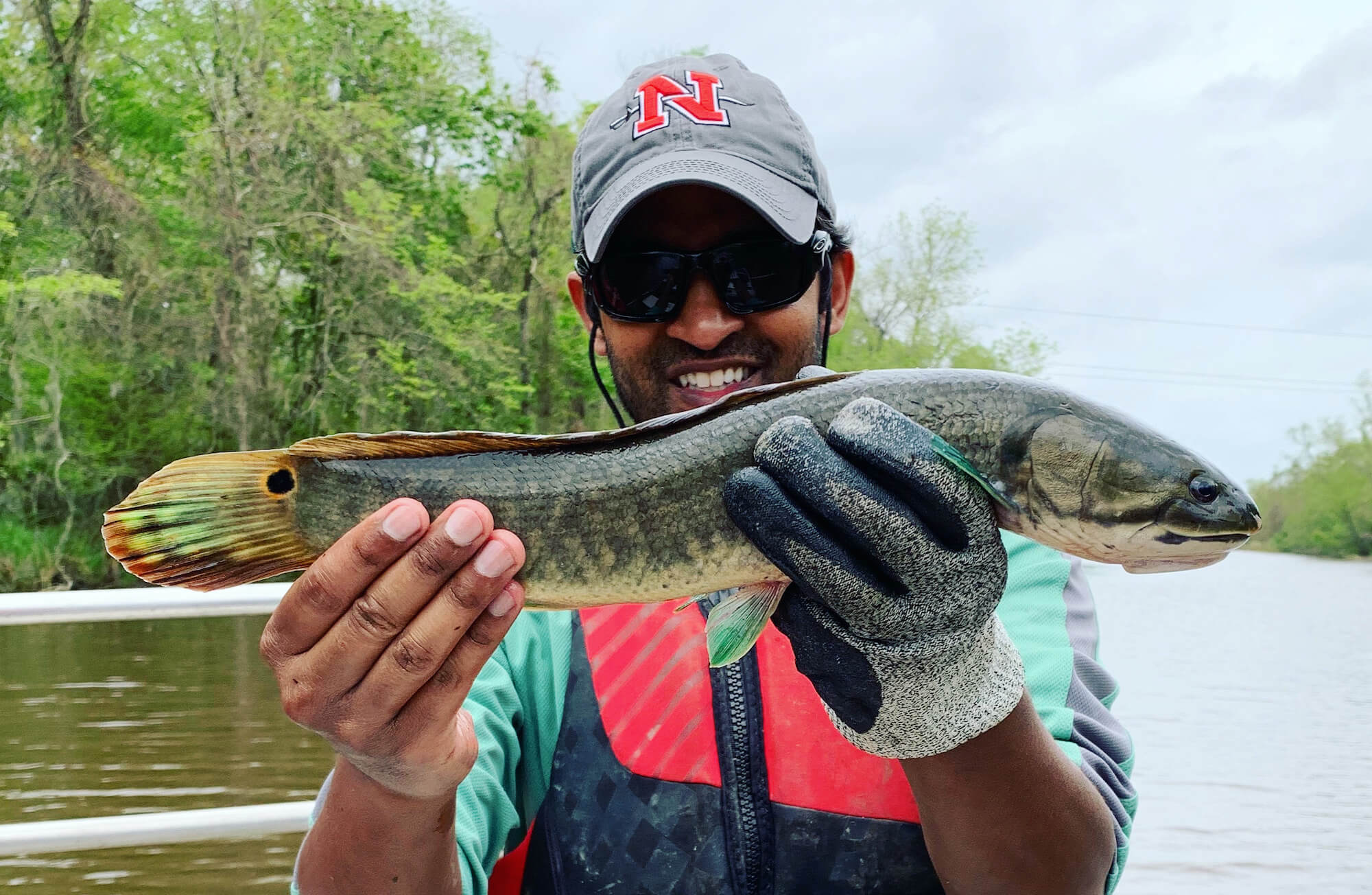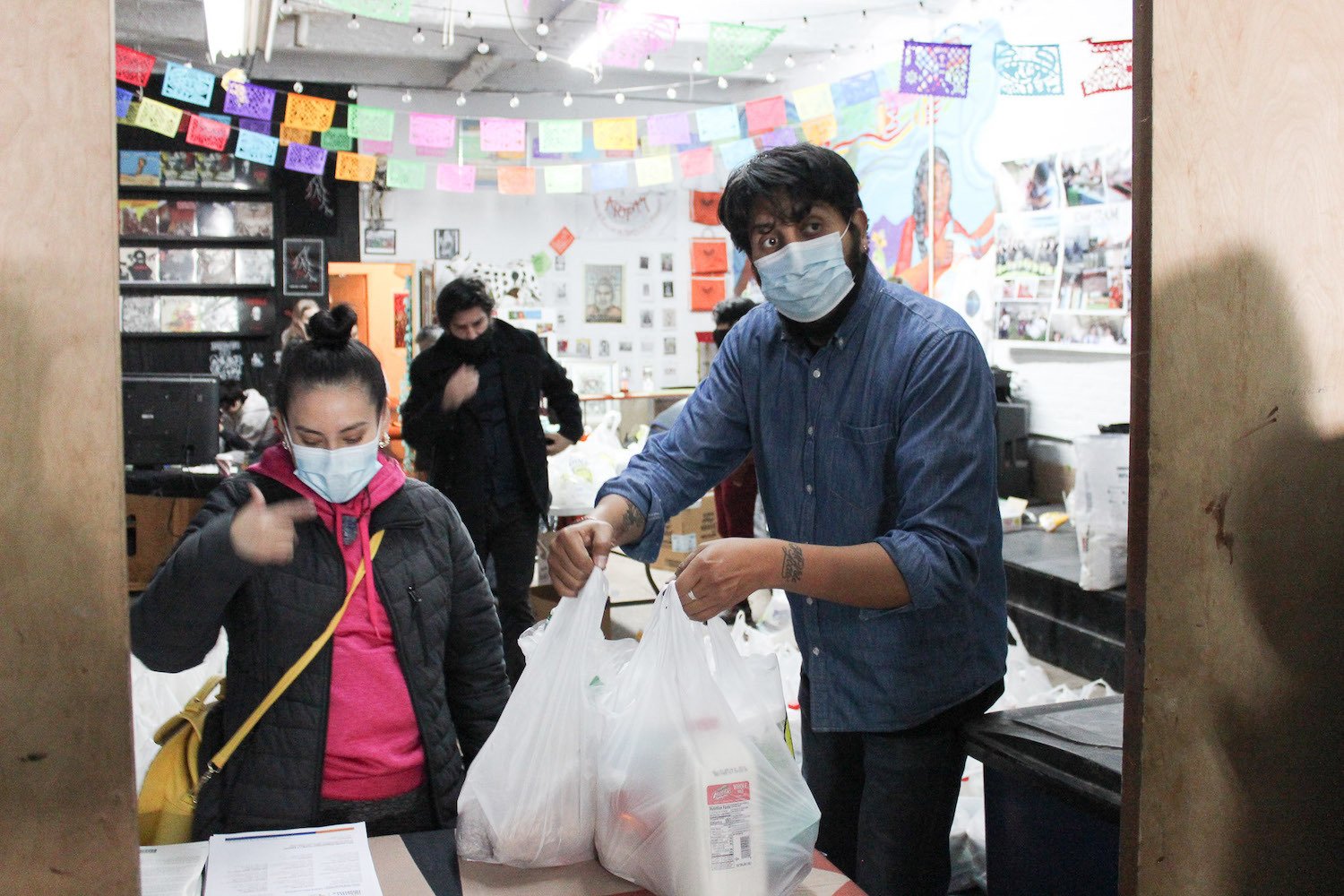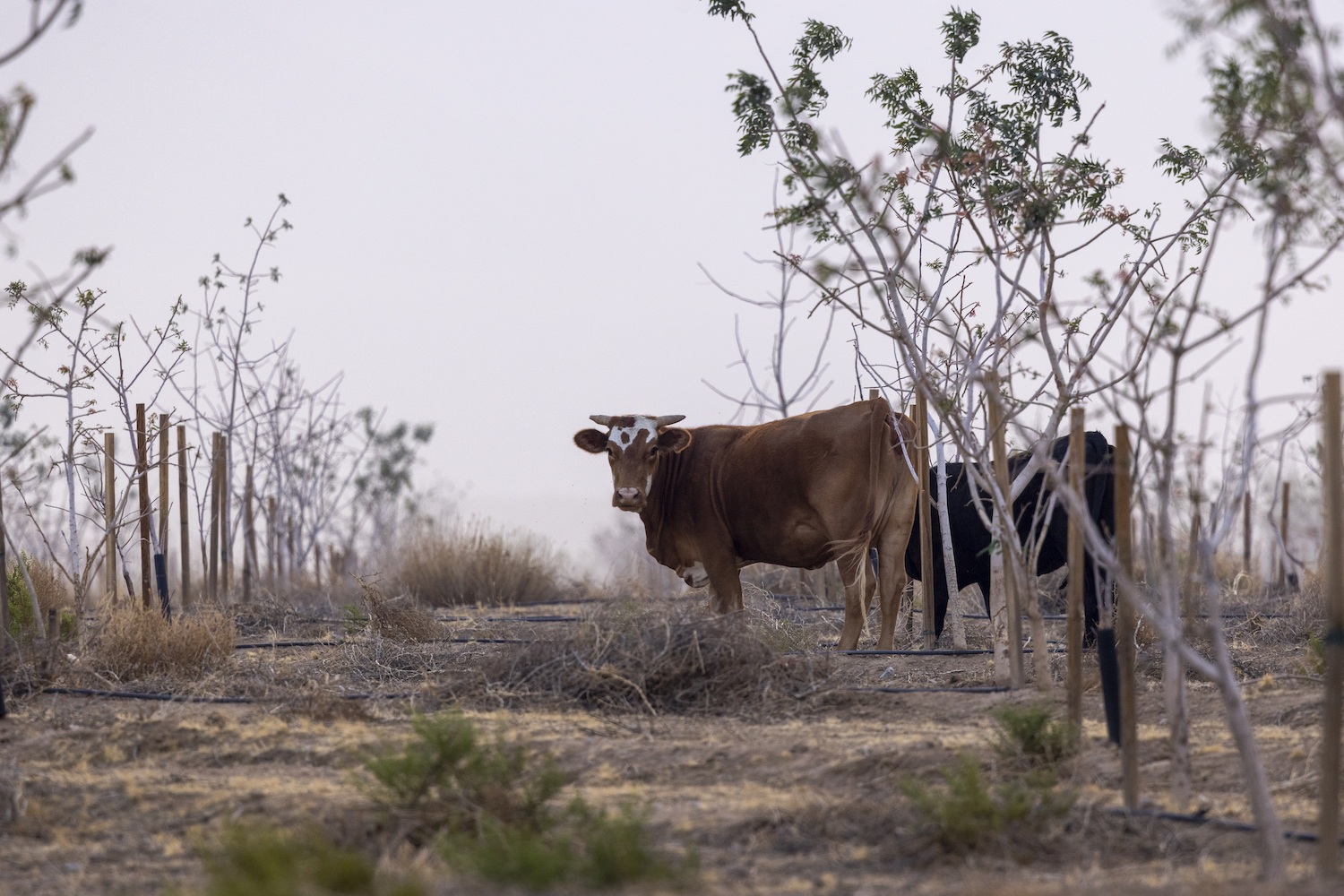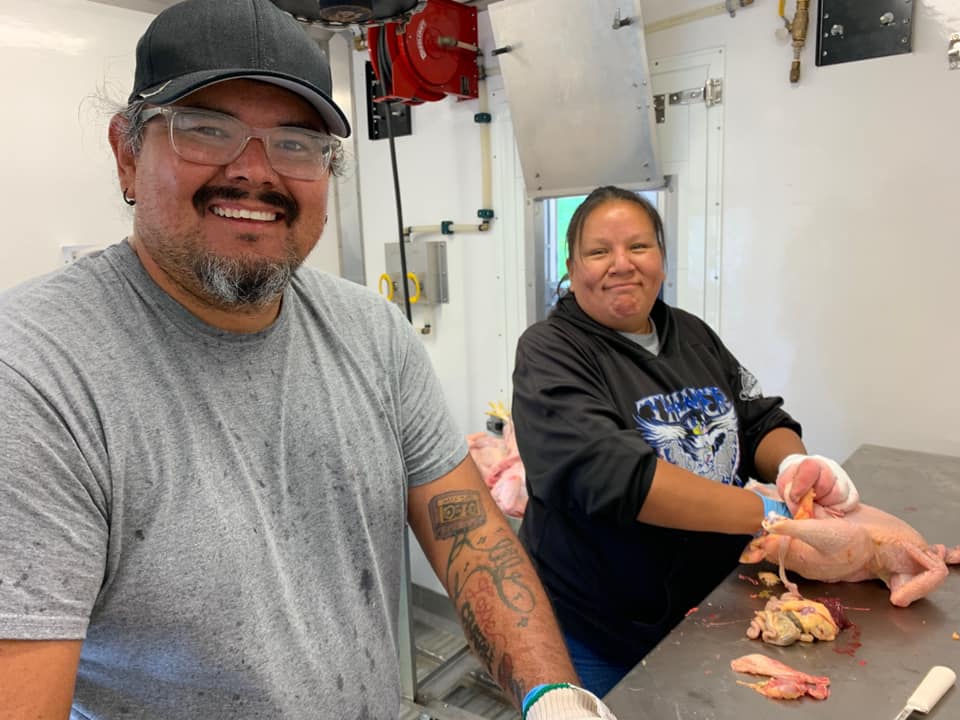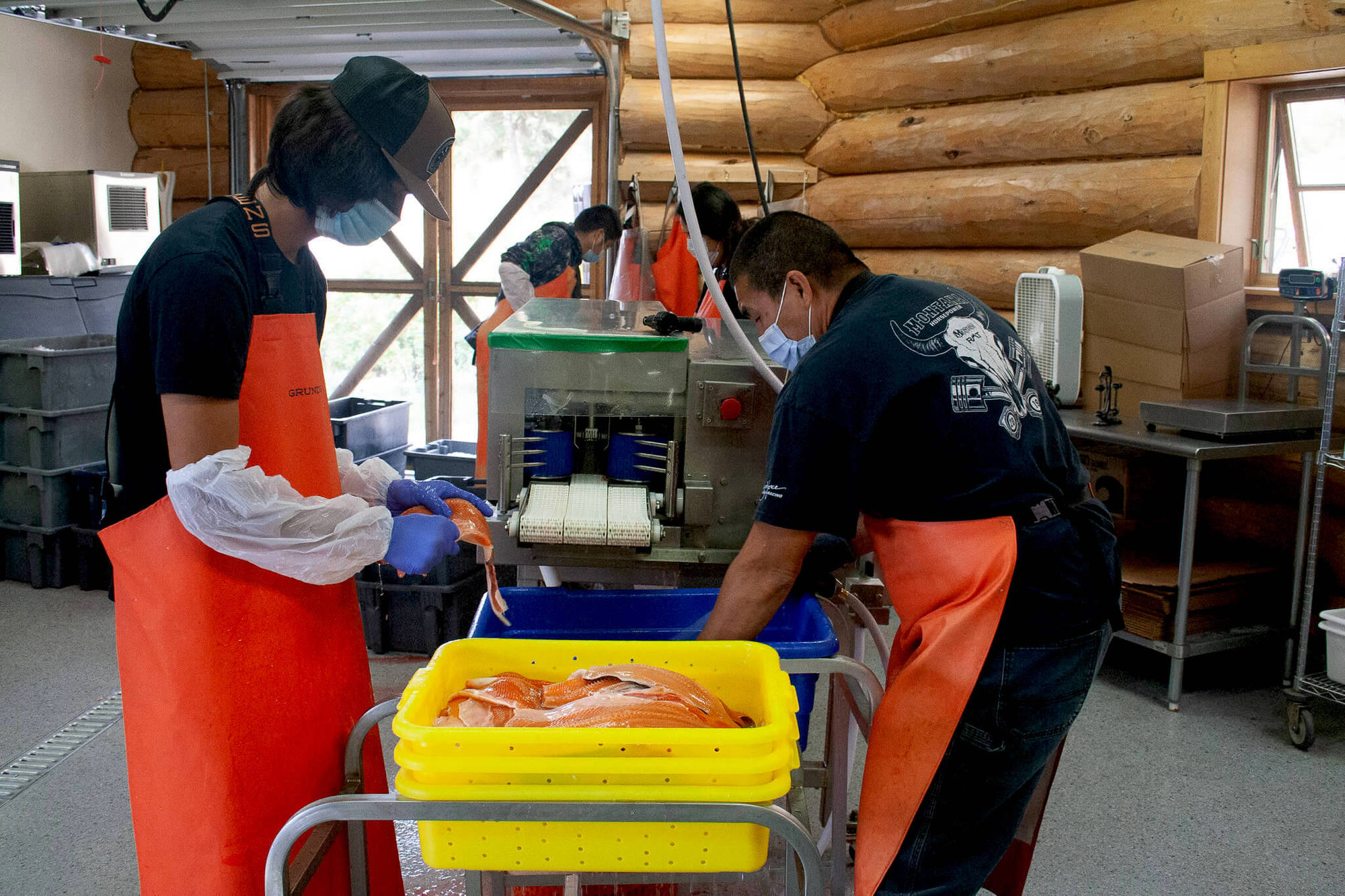
Lena Beck
Instead of eliminating them altogether, members of the Confederated Salish and Kootenai Tribes are strategically reducing the population each year, allowing other species to thrive once more.
Bud Bras and his friends used to fish for bull trout in Montana’s Flathead Lake in the 1950s and 1960s, long before they were designated a protected species. They were a lean, clean-tasting fish that the Bras family liked to bake and pan-fry. Casting from the shore, Bras would almost always go home with a haul.
“You could always plan on catching bull trout,” said Bras. “Once in a while you might get skunked, but not very often.”
One thing Bras never fished for was lake trout. There weren’t enough of them.
“There were hardly any lake trout in the ‘50s and ‘60s in that lake,” Bras said. “We called them ‘mackinaw’ then. All those years of fishing, we only caught one mack.”
That has all changed now.
Once a prominent fish across the region, bull trout have been listed as threatened under the Endangered Species Act since 1999.
Mackinaw, now more commonly known as lake trout, propel themselves through cold, freshwater habitats using a prominently forked tail fin, catching light on their speckled flanks. Spawning in the rocky substrate of lake shorelines and growing up to 42 pounds, these greenish-black char fish tend to rise quickly to the top of the food chain.
Introduced to the lake by Montana state officials in 1905, the lake trout population has exploded at the expense of native species. Lake trout preyed on bull trout, and nearly decimated their population in Flathead Lake. Once a prominent fish across the region, bull trout have been listed as threatened under the Endangered Species Act since 1999, thanks to factors like damming, habitat loss, and in the case of Flathead Lake, the presence of non-native species. Meanwhile, the population of lake trout aged one year and older was estimated to be 1.5 million as of 2012.
Fortunately for the bull trout in Flathead Lake, someone is looking out for them. The southern half of the lake sits on the Flathead Reservation, home to the Confederated Salish and Kootenai Tribes (CSKT). The bull trout is culturally significant to the CSKT, so the tribes came up with a plan to save them—by turning their predators into food.
—
At 197 square miles, Flathead Lake is bigger than Lake Tahoe. It doesn’t freeze over much anymore, but it used to. Bras’s daughter, Cindy Bras-Benson, once heard a story from a tribal elder about tribal members who would walk out onto the ice, make fishing holes, and catch bull trout.
“She said they would catch bull trout that were so big, they had to chop the holes bigger to get them out,” Bras-Benson said.
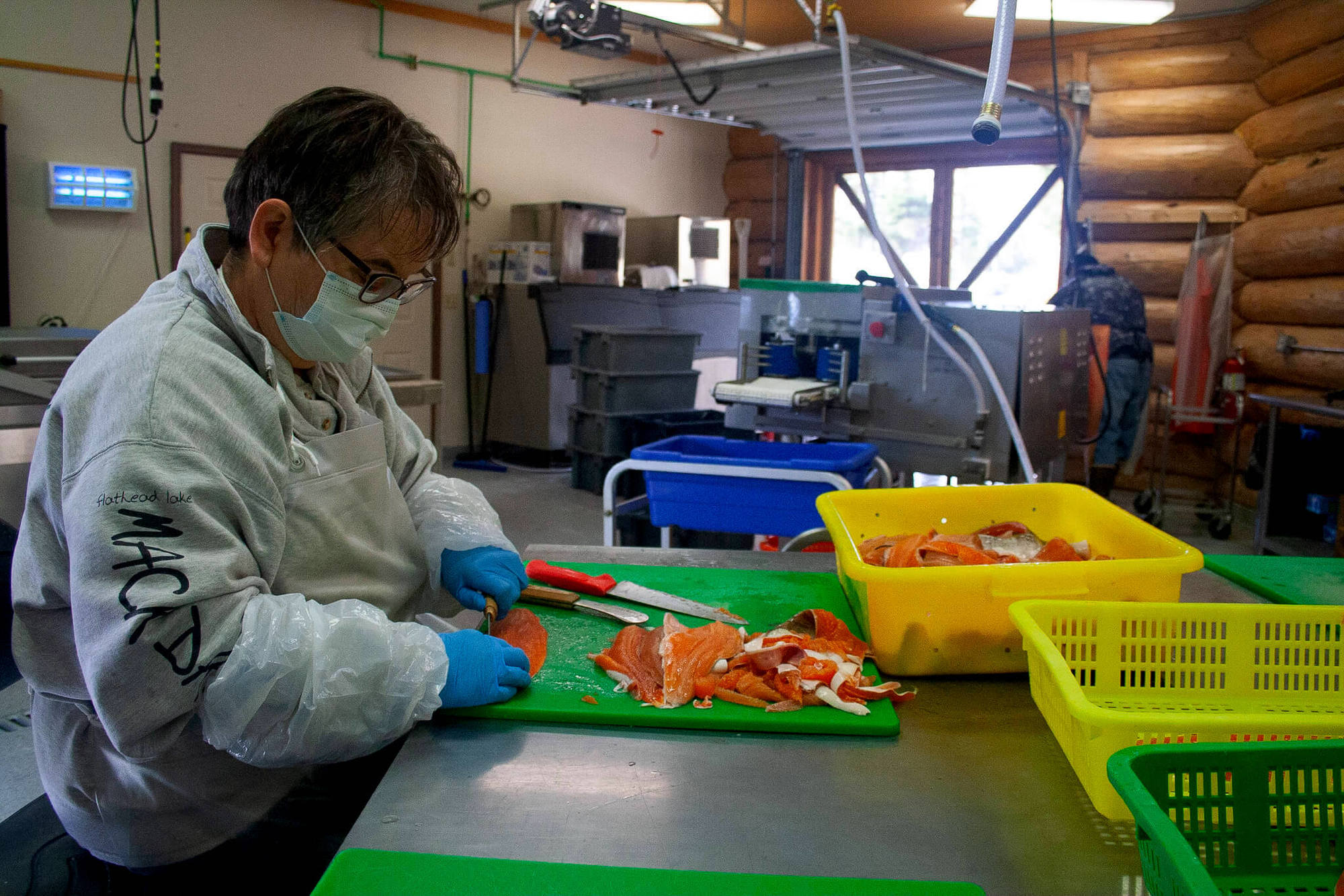
Cindy Bras-Benson at the CSKT’s Blue Bay fish processing center on Flathead Lake. Bull trout was bountiful during her childhood and now she’s working to save the species.
Lena Beck
Traditionally, the Salish and Kootenai peoples would hunt and fish with the seasons. Bull trout were not just an abundant food source, but one that would feed them in the scarcer winter months. State officials introduced a handful of fish species to Flathead Lake in the early 1900s, in an ill-advised attempt to add more options to the area’s fishing scene. Of that handful, lake trout was the only one that flourished.
The population erupted in 1981, when Mysis—tiny, translucent, darkness-loving shrimp—were discovered in Flathead Lake. They had been introduced into the watershed as a food source candidate for non-native kokanee salmon, but their arrival in the lake caused chaos. Instead of being the kokanee’s dinner, Mysis beat out the salmon for the main meal: zooplankton. By the time the 1990s rolled around, there were no more kokanee salmon in Flathead Lake, and lake trout suddenly found themselves with a lake full of tasty shrimp. Suddenly, Flathead Lake’s lake trout population was booming.
When lake trout get big enough to be unsatisfied by Mysis, they seek out other fish. Lake trout can eat fish over half of their own size, and even consume members of their own species. But in Flathead Lake, a central target of their predatory tendencies is the native bull trout, which by the mid-90s were reduced to a population of just over 1,000.
“It was kind of a shock,” Bras-Benson said.
When bull trout numbers got really low, her dad quit fishing in the lake entirely. He didn’t like the taste of the lake trout—didn’t think they compared to the native fish. The lake trout population was preying on bull trout to such an extreme that “the data suggests, without intervention, they would go to extinction,” said Barry Hansen, fisheries biologist for the CSKT. “It’s not a fair battle.”
Hansen is a tall man with a resonant voice and a conversational way of speaking. His hair and beard are both white—he’s been working for the CSKT for just over 30 years. Lake trout have been a top focus for most of that time.
Approximately half of Flathead Lake sits on the CSKT’s reservation, so the lake is co-managed by the CSKT and Montana Fish, Wildlife and Parks. In 2000, shortly after bull trout were listed as a threatened species, the two groups committed to prioritizing native fish.
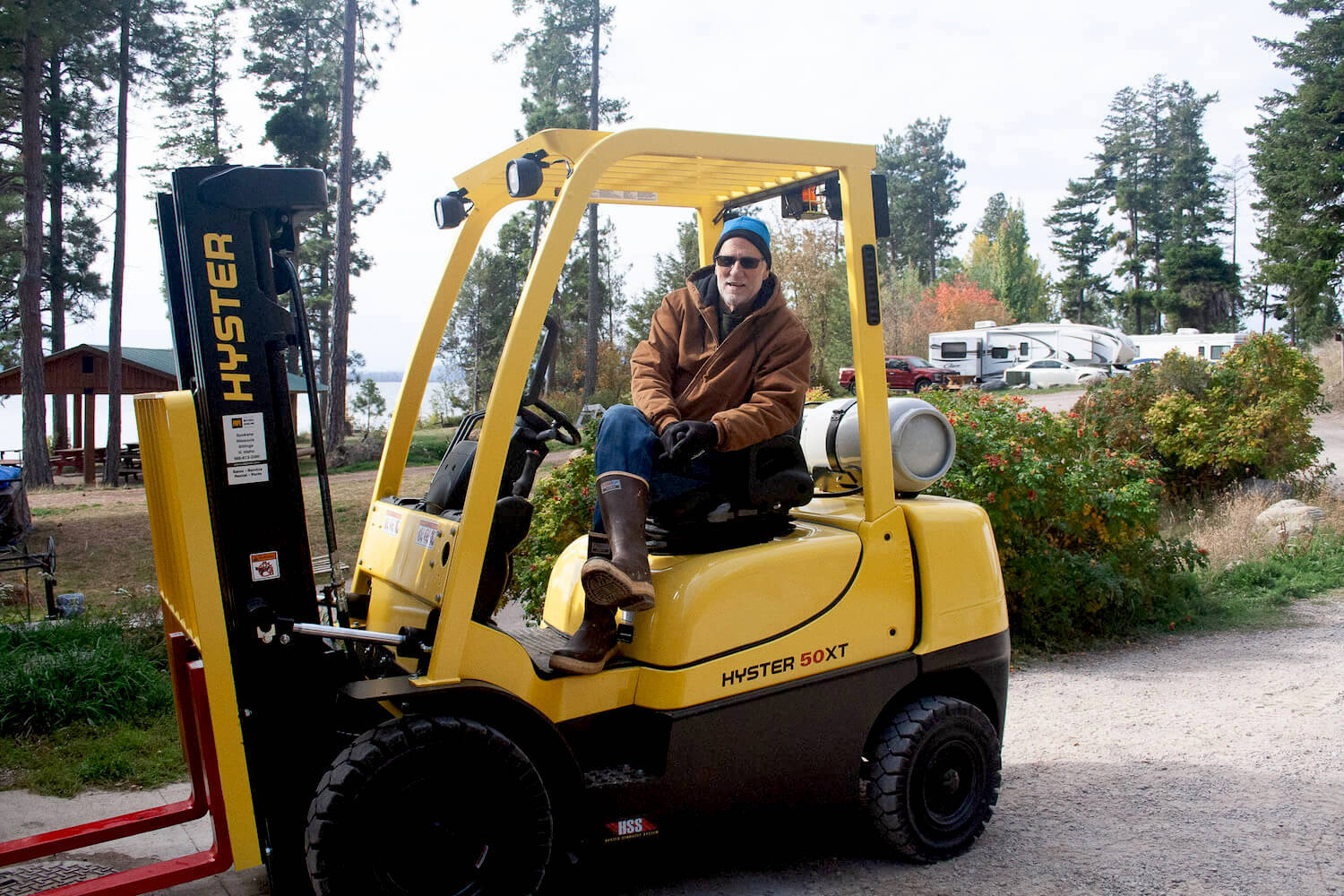
Barry Hansen is a fisheries biologist for the Confederated Salish and Kootenai Tribes (CSKT). He’s been working for the CSKT for over 30 years, with lake trout one of his greatest focus areas.
Lena Beck
“That may sound like a small thing, but it was a big thing,” Hansen said. The plan listed increasing and protecting native trout populations as one of three primary goals for the next 10 years.
They wrote the Flathead Lake and River Fisheries Co-Management Plan for 2001-2010, with another of its goals being to “balance tradeoffs between native species conservation and nonnative species reduction to maintain a viable recreational/subsistence fishery.” This plan emphasized the importance of recreational anglers as the primary tool for reducing lake trout. But over the next several years there was no substantial change. Something more needed to be done.
Flathead Lake is hardly the only body of water to struggle with an aggressive, non-native lake trout population. The west is peppered with lakes that have tried and failed and tried again to suppress lake trout. Yellowstone Lake in Wyoming and Lake Pend Oreille in Idaho are two neighboring communities that have grappled with a lake trout problem.
Those two lakes share a hauntingly similar narrative to Flathead Lake. Either lake trout were introduced or found there and the population exploded, dominating the ecosystem at the expense of native species. At both of these locations, officials have attempted to suppress the species.
At Yellowstone Lake, park officials tried vacuuming up lake trout eggs and depriving them of oxygen with tarps. They even attempted to snuff out the eggs by covering them with dead fish carcasses. Both locations have had varying levels of success, but neither has gotten rid of the problem.
The CSKT decided to take a different approach.
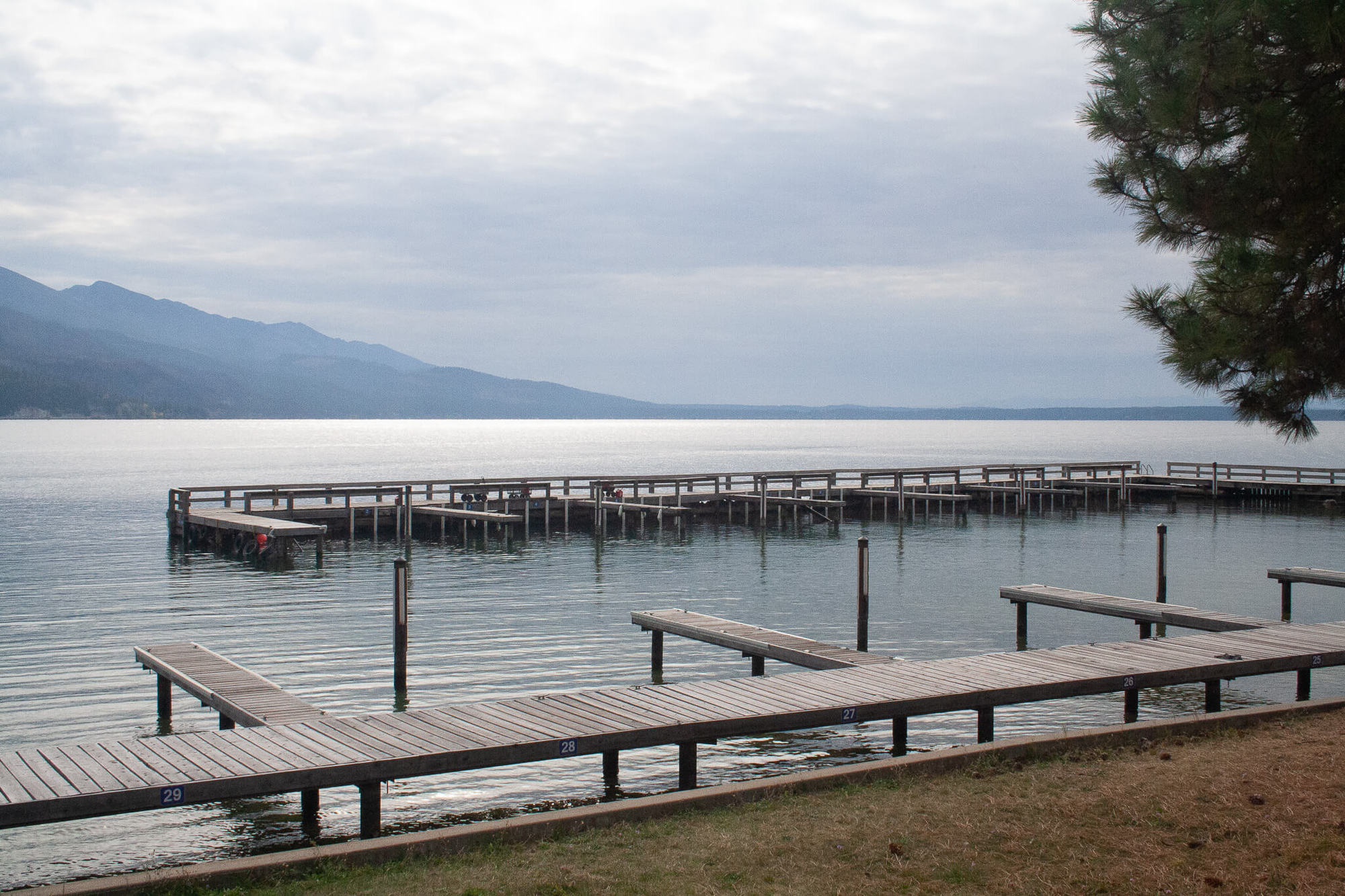
Approximately half of Flathead Lake sits on the CSKT’s reservation, so the lake is co-managed by the CSKT and Montana Fish, Wildlife and Parks. In 2000, shortly after bull trout were listed as a threatened species, the two groups committed to prioritizing native fish.
Lena Beck
Summers on Flathead Lake draw visitors from across the state and beyond. The clear, clean water is perfect for swimming, kayaking, and, of course, fishing. But on this particular day, a late-summer rainstorm has caused the large lake to behave like a small ocean. White-capped waves crest on the water’s surface, forceful enough to wipe out pieces of the shoreline.
At the CSKT’s Blue Bay fish processing center on the southeastern shore of Flathead Lake, this means that it’s not a good day to drag nets, which can get tangled and torn. Instead, the crew spends the afternoon on the shore, replacing their nets and setting up a new vacuum sealer. Cindy Bras-Benson helps guide the process: After her father quit fishing there, Bras-Benson went to work to save the fish species that was so bountiful during her childhood.
This fish processing plant is the central hub for the CSKT’s lake trout suppression effort, with a two-pronged approach introduced in 2014. Instead of trying to completely extirpate the species, the CSKT tries to decrease their numbers a little more every year.
They lay two miles of netting every day, in sections of about 900 feet, each of which pulls up anywhere from 30 to 150 fish, which are then brought to shore for processing.
First, there are community fishing events called “Mack Days.” The first Mack Days, in 2002, brought approximately 900 lake trout out of Flathead Lake. Now, the annual number is closer to 60,000.
The second tactic involves strategic drag netting. The CSKT net, process, and sell fish through a program established in 2017 called Native Fish Keepers, Inc., based in the Blue Bay fish processing center. Because of habitat knowledge and observations, Native Fish Keepers are able to net large numbers of lake trout with very little bycatch—the accidental netting of other species.
Lake trout tend to thrive in deep waters. By netting in deeper parts of the lake, Native Fish Keepers can target their search, using bigger-mesh nets that enable juvenile bull trout, which like to swim into the depths to snack on Mysis shrimp, to slip right through.
The crew at Native Fish Keepers goes out on their boat (an unnamed silver trawler that at least one team member jokingly refers to it as the “Slimy Sculpin”) five days per week in the summer months. They lay two miles of netting every day, in sections of about 900 feet, each of which pulls up anywhere from 30 to 150 fish, which are then brought to shore for processing. The fish are cleaned, filleted, vacuum-sealed, and flash-frozen to preserve their freshness. Hansen says that the fish go from lake to freezer in four hours, sometimes less.
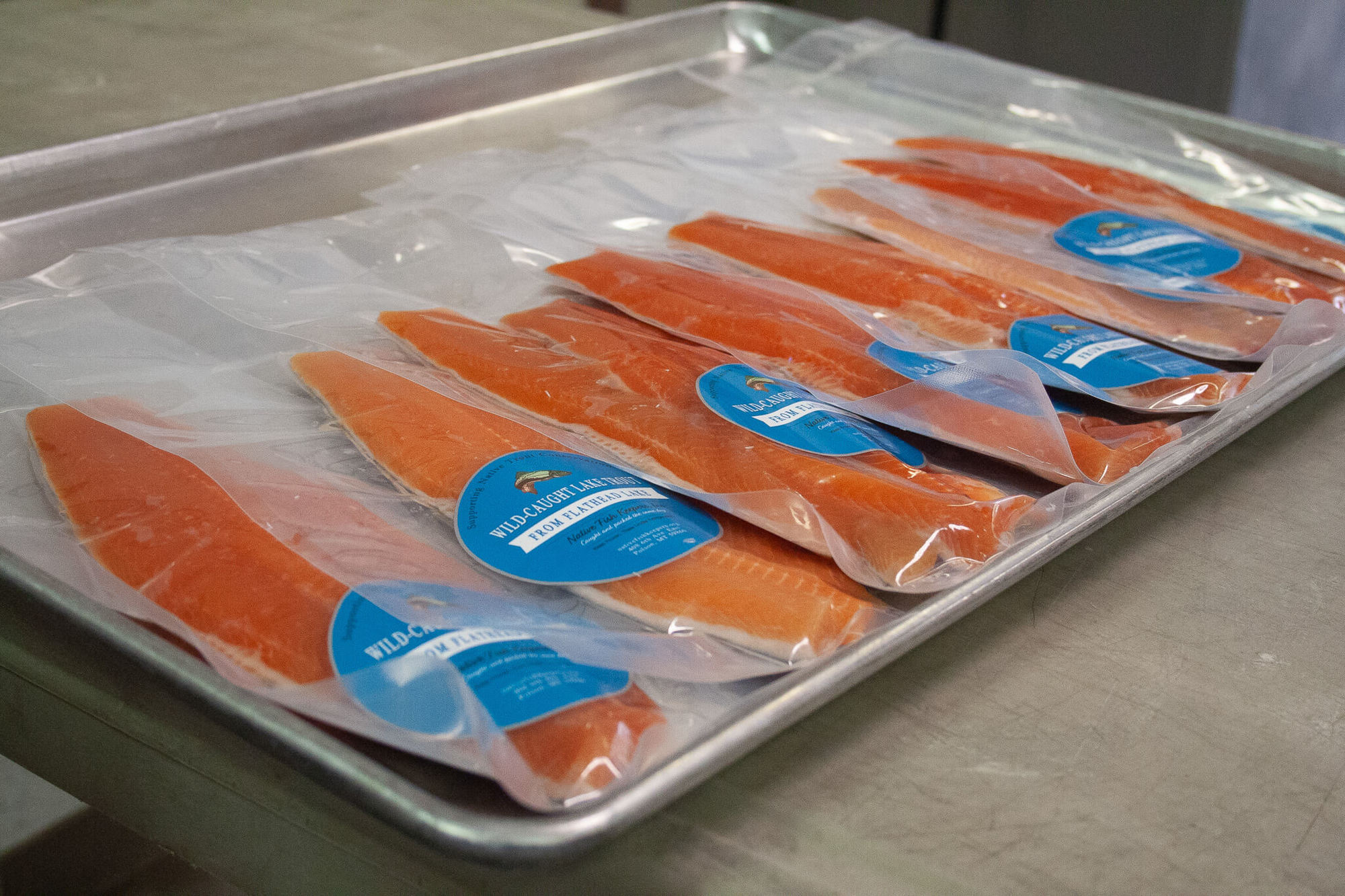
Native Fish Keepers sells the bulk of its catch to restaurants, grocery stores, and private buyers across Montana.
Lena Beck
Native Fish Keepers sells the bulk of its catch to restaurants, grocery stores, and private buyers across the state. According to Native Fish Keepers Marketing Director Lynn DuCharme, the organization processes an average of 22,000 pounds of fish every year, about 80 percent of which is invasive lake trout. People like to buy the fish, says Hansen, because it’s a local, wild-caught product that supports native trout conservation.
The Mack Days haul—about 4,000 pounds annually—gets donated to food banks like Loaves & Fishes Food Pantry in Polson. According to operational manager Mary Martin, the two Mack Days competitions are enough to keep them stocked with fish all year round.
While many lakes struggle with lake trout, the CSKT is unique for commercializing it as a food source. All the money made in the business goes back to funding its operation—though that only covers about 20 percent of the total costs of Native Fish Keepers. To cover the rest of their expenses, they use mitigation funding from two hydroelectric dams that impact the lake’s fisheries. They also apply for relevant grant funding, and Hansen anticipates doing more of this in the future.
The CSKT has never entertained the idea that they will get rid of lake trout entirely, says Hansen. Instead, their population-modeling research indicates that if they reduce the lake trout population by 75 percent, bull trout will make a 90 percent recovery.
“That sounded like a pretty good trade to us,” Hansen said. “Not just pie in the sky. It’s something we could achieve.”
—
Considering the sheer number of lake trout in Flathead Lake, the CSKT is now evaluating how suppressing lake trout might affect the lake’s current food web.
Environmental economist Nanette Nelson’s enthusiasm for her work is palpable. Tall, with glasses and short, curly gray hair, Nelson moved to Montana about five years ago to work at the Flathead Lake Biological Station (FLBS). (Editor’s note: This story’s writer was previously an intern with FLBS.)
“Any work that’s done in this landscape should somehow engage the tribes, and their perspective on the landscape, and their right to management on the landscape.”
In 2020, Nelson received grant funding from the Environmental Protection Agency as part of the Columbia River Basin Restoration Funding Assistance Program. She is using this grant to monitor how methylmercury distribution in the food web changes with the removal of large numbers of lake trout, and to evaluate the community’s awareness of safe fish consumption guidelines.
Methylmercury bioaccumulates in aquatic food chains: Small organisms can have very low levels of methylmercury, but that level grows higher in the larger organisms that prey on them. By the time you get to the top of the food chain, these levels can become a cause for concern if intended for human consumption.
Fear of mercury poisoning is something that often steers consumers away from eating fish. By contrast, the USDA’s most recent dietary recommendations promote fish consumption like never before, citing the many health benefits of fish and seafood.
“Because it’s not a yes or a no, a black or white, it becomes a very complicated message to get across to people,” Nelson said.
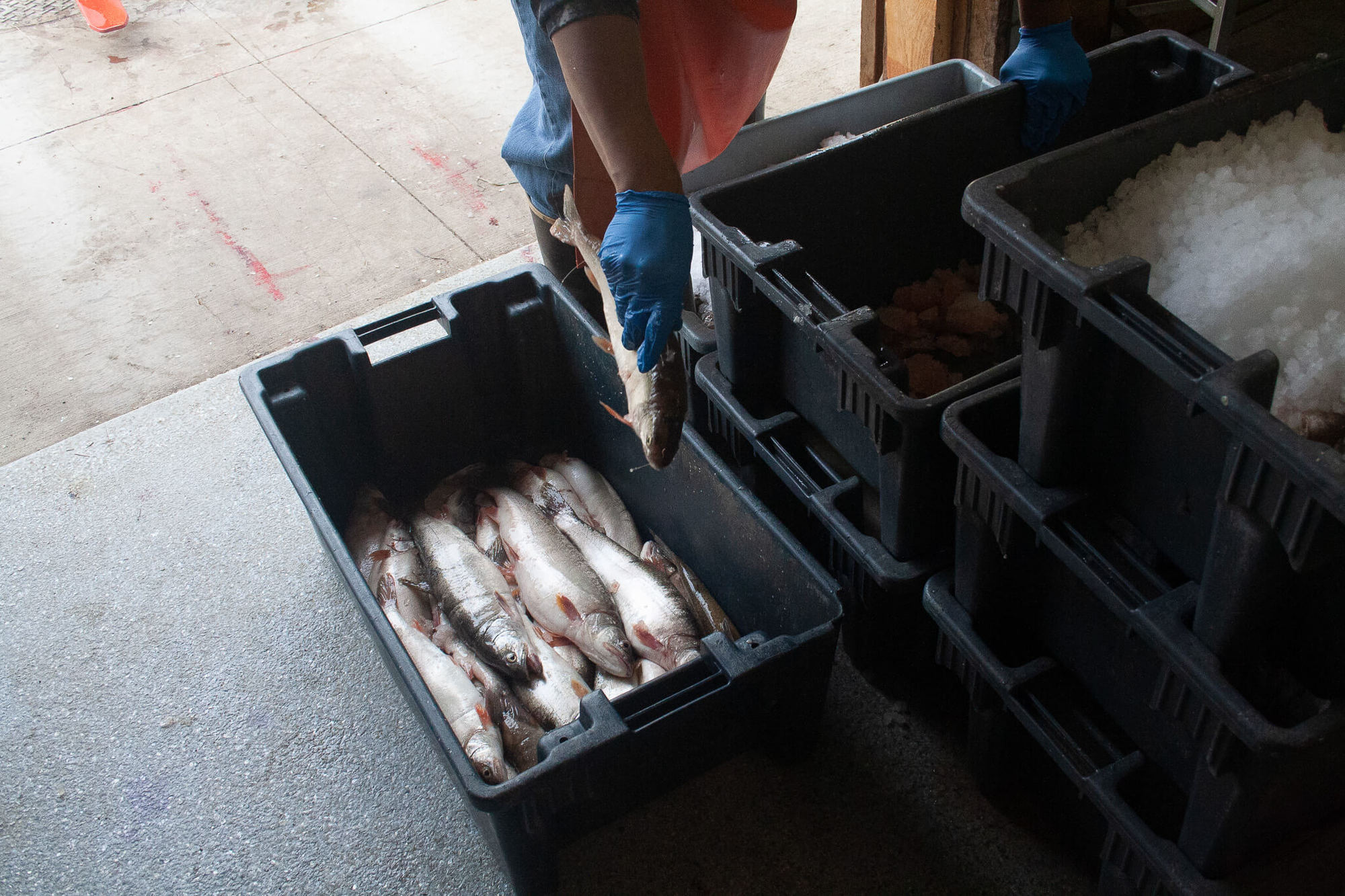
The CSKT is now evaluating how suppressing the large numbers of lake trout might affect the lake’s current food web.
Lena Beck
Lake trout are safe to eat as long as you consume fish that fall within the official recommendations, which compute servings per month based on the size of the fish; adults can consume 12 monthly servings of a trout that is under 14 inches long. The CSKT monitors methylmercury in lake trout and uses this data to inform safe consumption guidelines.
Because most of the investigators for this project work for FLBS, any and all implementation of the data will be at the discretion of the tribes. This was very important to the researchers.
“There’s all these layers of history and backstory,” Nelson said. “We didn’t want to be the drivers of how the data would be used.”
According to Erin Sexton, a co-principal investigator on this project and research scientist with FLBS, there was no other way to go about this initiative.
“Any work that’s done in this landscape should somehow engage the tribes,” Sexton said, “and their perspective on the landscape, and their right to management on the landscape.”


